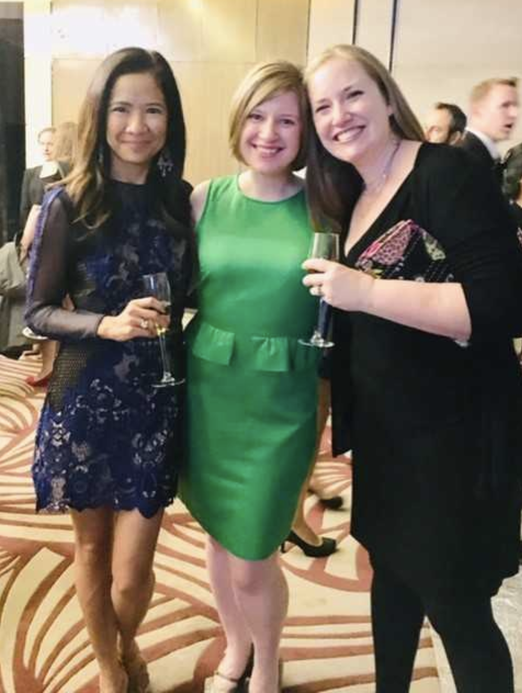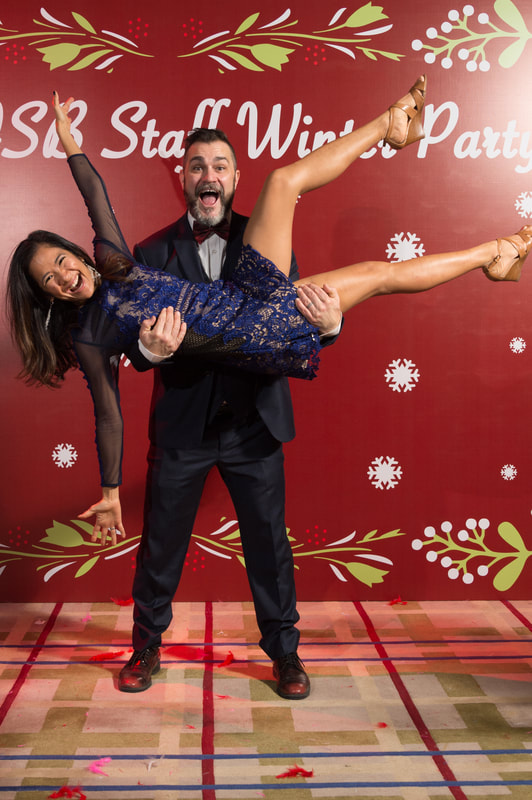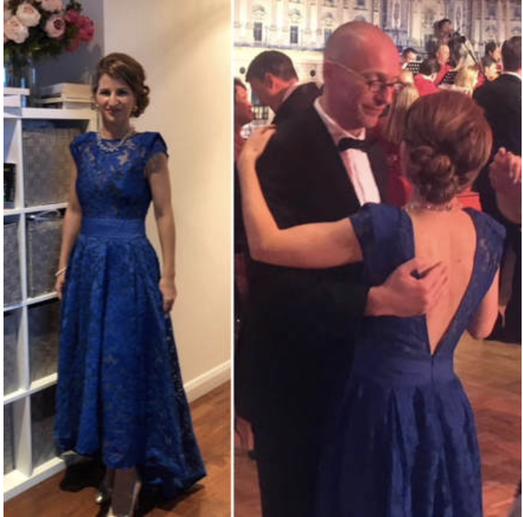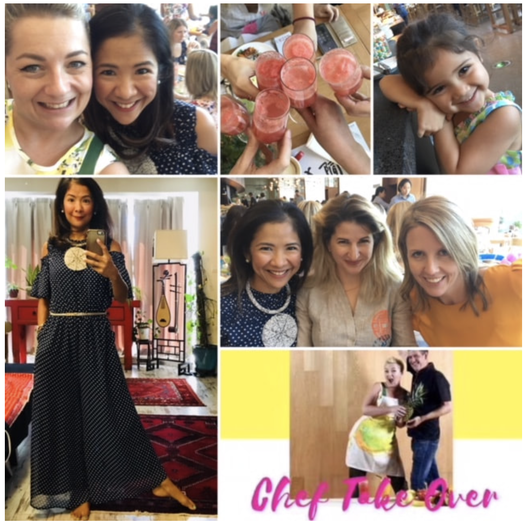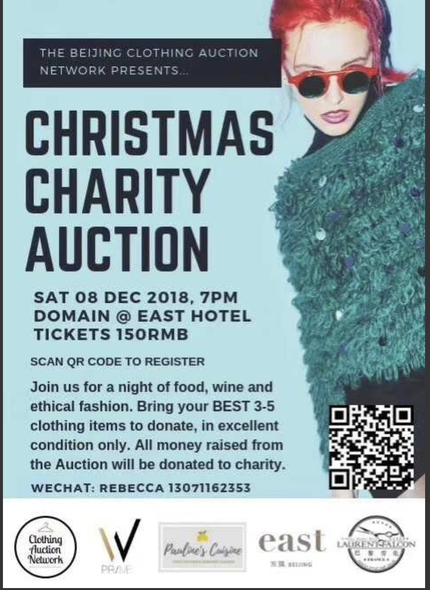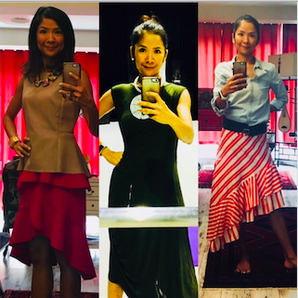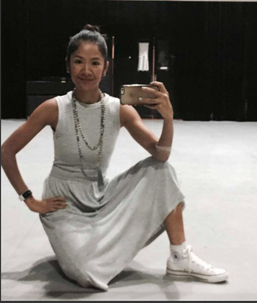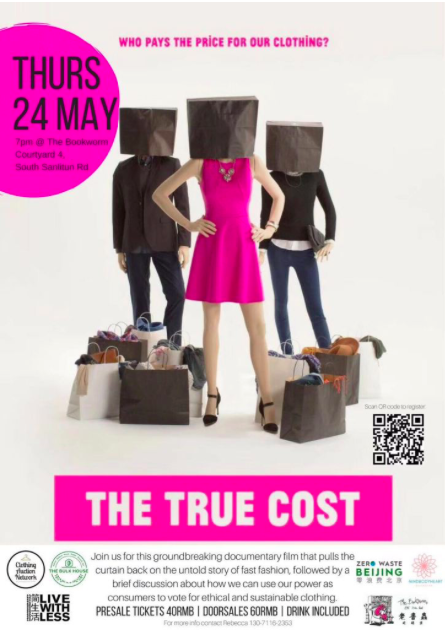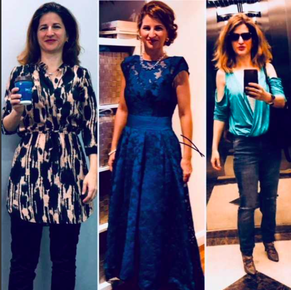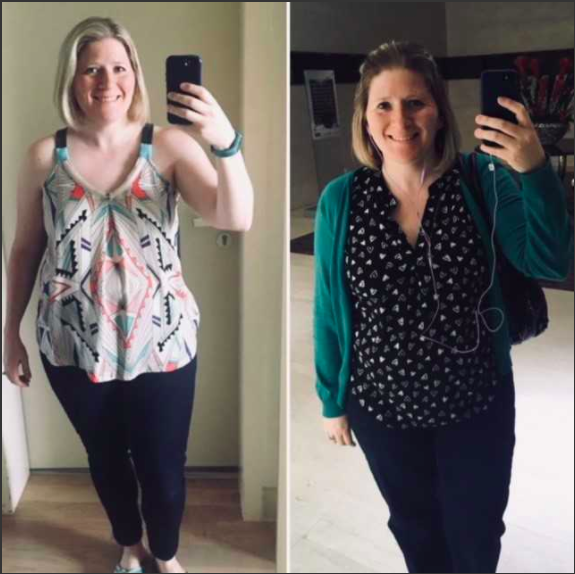|
What items should women shop for to create more joy and less overwhelm in their closets? Tip 1: Shop for pieces that you'll wear. Brooklyn-based stylist, Hilary Rushford advised to invest on clothes that will get the most wear. These are pieces that will fit your aesthetics, work, and lifestyle; ones that could easily pair up with most of the existing items in your wardrobe. Rushford shared that most people only wear 20% of their wardrobe while the other 80% lie dormant in their closet. Thus, look for something that will become a natural part of your favorite pieces and perhaps even pair-up with some items from your 80%, thus giving those clothes more wear time. Tip 2: Accessorize If you want to splurge on something, invest on practical accessories that will either pair nicely with most of your clothing or increase the star power of an outfit. Examples could include a statement necklace that can immediately raise the visual impact of your dress, a pair of nude sandals that go nicely with your summer clothes, or a buttery soft leather purse that will fit your stuff during the non-laptop weekend strolls around town. Tip 3: Fill the gaps in your wardrobe. Identify the gaps in your closet, create a wish list, and purchase an item that will balance-out the pieces that you already have. If your closet is full of neutral and classic pieces, why not spice it up with some color? On the other hand, if your closet screams of patterns and color, getting a more neutral item will provide balance to the outfits that you can create. While walking pass my open closet, my husband Steve commented, “You have a lot of black clothes,” that help me realize that 2/3 of my closet had a black, white, grey, or navy color scheme. Thus, I went to a clothing auction and intentionally bought items with either color or pattern. The clothing auction movement in Beijing has given me the avenue to sustainably experiment with my style and choose items that filled the gap in my closet. Tip 4: Buy the “special occasion clothing” from the Beijing Clothing Auction Network Speaking of auctions, why spend time and money on something that will just hang and occupy space in your wardrobe but rarely gets worn? Thus, try to get the clothes that you will only wear once in a while – for a party, an event, a job interview, or a friend’s bachelorette party – from a clothing auction. This blue dress for example that I wore to a Winter Party was from the auction. I bid on it on a downtown auction but lost the bidding war to Violet, another attendee. A couple of days after, Violet messaged me and shared that the dress didn't fit her. She then offered to mail it to me as an advance Christmas present! I paired it with nude sandals that I purchased from a garage sale for five dollars and accessorized the outfit with crystal chandelier earrings that I wore to my wedding. Similarly, Kristina, an expat executive from Sony and a self-confessed auction addict, bought a cobalt blue gown from the auction, wore it to the Vienna ball, then brought it back for another lady to enjoy. Taozi yoga studio owner, Theresa bid on the dress and won it. Meeting inspirational and like-minded women and having a story to accompany your purchase is another benefit in coming to these bi-monthly city and Shunyi events. Tip 5: Buy something that will spark joy If you need to buy a dress, get something that brings you joy. Mari Kondo, an organization specialist, recommends holding an item in your hand and feeling if it sparks joy. I bought a navy blue polka dotted jumpsuit with a vintage feel from Winners, a discount brand store in Woodstock, Ontario. I paired it with a statement necklace with a beaded circular pendant that my friend, Leanne, got from Ethiopa. The necklace played on the geometric shapes in the dress. I also belted the cinched waist to highlight my shape. I wore the outfit to a Beijing Mother’s Guild event at the East Hotel where the group's founder, Pauline, was a guest chef at the Feast Brunch. The jumpsuit felt spacious enough to enjoy the sumptuous meals and comfortable enough to run after my two girls who joined our ladies day out. It gave me joy. Interested to join the Beijing Clothing Auction network, add me at we chat: Hannah_Northcott or message Rebecca.
The network will have a Christmas Charity Auction on Dec. 8 where you can practice the tips shared on this blog.
0 Comments
Previously published at China Family Blog on May 18, 2018 Strolling down Fifth Avenue in Manhattan with red and white sale banners wrapped around store fronts stopped me in my tracks and increased my heart rate. A sale sign draws me like a moth to a flame. I was in New York City in the spring of 2000 when Swedish mega-brand H&M first opened its doors on 5th Avenue. A serpentine line slithered around the block as eager shoppers waited to venture into the three floors of a consumer’s dream store. I was one of them. A bargain shopper, I enjoyed shopping without wanting to pay high prices for clothing; after all, I was studying in New York on a scholarship at the Lee Strasberg Theater and Film Institute near Union Square. I lived on a diet of bagels, one dollar pretzels, New York pizzas, and McDonald burgers. I was living in the fast lane of fast food and fast fashion in one of the fastest cities in the world. That year, I gained about 15 pounds and had a wardrobe filled with clothes that ripped in the seams after a couple of seasons. That was almost 18 years ago. Fast forward to modern day Beijing. I just watched The True Cost, a documentary film released in 2015 about fast fashion. It showed how my naïve consumeristic habits have inadvertently contributed to the economic and capitalist system that led to the death of hundreds people when a garment factory collapsed in Bangladesh, the contamination of the highly fertilized cotton fields of Texas, the degradation of people’s health in Punjab, the suicide of hundreds of farmers losing lands to major corporations, and the violence in Phnom Phen, when factory workers protested against the government for a reasonable increase of monthly wages – just so I can buy a shirt for $5 or a pair of jeans for $20. I turned away from the screen when the film showed wounded women and men being pulled underneath the rabble of Raza Plaza, a garment building in Bangladesh. “People wear clothes that are made from our blood,” shared a female Bangladeshi worker who also had to leave her young daughter in the village to travel to the city to work in poor conditions to produce clothing that major brands sell for very cheap prices. According to the movie, things that people don’t need have started to cost less in the last decade and are being sold as dispensable items that later form mountains of land fill and take thousands of years to decompose while emitting chemicals into the atmosphere. The economic model of fast fashion has grown to a trillion-dollar industry without factoring in the cost of production to human lives and the environment. The shift in the business model in the fashion industry started around the time when H&M first opened its flagship store in New York. That was cold water poured over my head because when I shop in Toronto in the summer, the first retailers that I automatically gravitate towards are H&M, Zara, Old Navy, the Gap, and whatever store has the crimson sale flag flying on their façade. The True Cost movie may have just curbed my habit of bargain shopping and made me question my mindless expedition of the accumulation of goods to ask questions like, “Where did this item come from? Where was it made? What living and working conditions did this dress cost factory workers? What economic system am I contributing too in buying this $10 jeans? Do I really need this? Does my desire for another shirt in my closet outweigh my curiosities in seeking ethical business practices?” So what’s the alternative? About three years ago, I joined my first clothing auction hosted by New Zealander Rebecca Archer at her townhouse in Capital Paradise. She invited a group of women to bring good quality clothes that we no longer use and a drink or dish to share for a potluck. Around that time, I just had my second baby Ariella; I had a lot of maternity and loose clothing that I needed to get rid of. My basement littered with huge bins of clothing from my pre-pregnancy days that I held onto with the thought that I would fit back into them after two children. Well, I didn’t. Those clothes went into a blue IKEA bag for the auction, which included tiny bikinis that I got in Brazil. It felt good to toss those in the bag. The clothing auction started with an hour of mingling and appetizers from the potluck where women could also rummage and try on pieces from the massive pile of clothes. Stripping down to one’s underwear and trying dresses from other women’s closet was definitely a bonding experience. There was something freeing about it. Or perhaps it was the overflowing wine from Cheers. Needless to say, it was a better experience than going through sample sales in the Fashion District. The auction started around 8:00 pm. The auctioneer would hold up a piece of clothing and start the bid off at 10 RMB. If more than one person wanted the item, then a bidding war would ensue, but if only one lucky lady wanted it, then she could take it home for less than two bucks. If an item was held up and someone wanted to try it, they could just ask for it and the auctioneer would proceed with a different piece. Thus, even those that don’t fancy sorting through piles of clothing could just wait for pieces that caught their eye during the auction and still get a chance to try it on. Definitely a different process than Sotheby’s. All the clothes that weren’t purchased were donated to the Roundabout (a charity organization in Beijing) and the money raised was given to the hosts preferred Charity organization. The clothing auction movement in Beijing, for example, has raised over 100,000 RMB for charities like Dew Drops, New Hope Foundation, Little Adoption Shop, Starfish Project, Magic Hospital, Smile Week, Autism Awareness Week, March for our Lives, Hope Foster Home and Days for Girls. Moreover, it has created a community among like-minded women and have connected people that resided in different areas in the sprawling city of Beijing. The group also has a WeChat group where we share photos of outfits bought from the auction.  Since I started joining the slow fashion movement, I’ve given away about sixteen IKEA bags of clothes, have stripped down my wardrobe to pieces that I love and wear, have made new friendships, have contributed to a vast number of charities and furthermore, am more aware of my consumer habits. I’ve also cut down on my shopping time which has made my husband, Steve, happy because the moment he steps into a mall, the question he would ask is, “What’s our exit plan?” I wish I could say that the crimson banner of sale signs no longer catch my attention. It still does. I may even still walk into to the store; however, it doesn’t mean that I would buy a bag of cheap clothes from it. May the bold blood-red sign bring to remembrance the people, mostly women, sweating in hot garment factories with cracked walls and chemical-ridden environments. When I touch that piece of clothing with a red tag that says $5, I just need to pause and ask myself, “Is it worth it?” Do you want to start your slow waltz away from fast fashion? Join us in the Beijing Clothing Auction movement by adding becstarnz or host your first one in your city. Better yet, start one in your own country. If you need more information about it, please add me on WeChat or through my website (contact information listed at the bottom). Also, please watch another showing of The True Cost on May 24 at the Bookworm near Sanlitun. To connect with the writers at China Family Blog, go to Facebook or go to WeChat by scanning the QR code and asking to join the WeChat group. |
